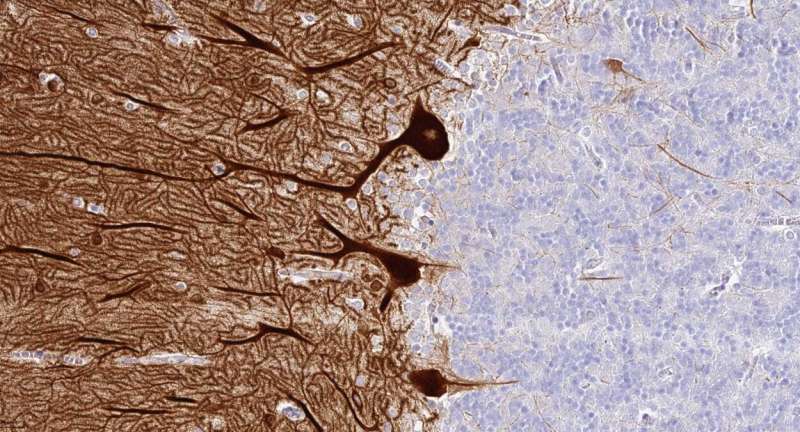Researchers publish digital atlas of all human brain proteins

An international team of scientists led by researchers at Karolinska Institutet in Sweden has launched a comprehensive overview of all proteins expressed in the brain, published today in the journal Science. The open-access database offers medical researchers an unprecedented resource to deepen their understanding of neurobiology and develop new, more effective therapies and diagnostics targeting psychiatric and neurological diseases.
The brain is the most complex organ, both in structure and function. The new Brain Atlas resource is based on the analysis of nearly 1,900 brain samples covering 27 brain regions, combining data from the human brain with corresponding information from the brains of the pig and mouse. It is the latest database released by the Human Protein Atlas (HPA) program which is based at the Science for Life Laboratory (SciLifeLab) in Sweden, a joint research centre aligned with KTH Royal Institute of Technology, Karolinska Institutet, Stockholm University and Uppsala University. The project is a collaboration with the BGI research centre in Shenzhen and Qingdao in China and Aarhus University in Denmark.
"As expected, the blueprint for the brain is shared among mammals, but the new map also reveals interesting differences between human, pig and mouse brains," says Mathias Uhlén, Professor at the Department of Protein Science at KTH Royal Institute of Technology, Visiting professor at the Department of Neuroscience at Karolinska Institutet and Director of the Human Protein Atlas effort.
The cerebellum emerged in the study as the most distinct region of the brain. Many proteins with elevated expression levels in this region were found, including several associated to psychiatric disorders supporting a role of the cerebellum in the processing of emotions.
"Another interesting finding is that the different cell types of the brain share specialised proteins with peripheral organs," says Dr. Evelina Sjöstedt, researcher at the Department of Neuroscience at Karolinska Institutet and first author on the paper. "For example, astrocytes, the cells that 'filter' the extracellular environment in the brain share a lot of transporters and metabolic enzymes with cells in the liver that filter the blood."
When comparing the neurotransmitter systems, responsible for the communication between neurons, some clear differences between the species could be identified.
"Several molecular components of neurotransmitter systems, especially receptors that respond to released neurotransmitters and neuropeptides, show a different pattern in humans and mice," says Dr. Jan Mulder, group leader of the Human Protein Atlas brain profiling group and researcher at the Department of Neuroscience at Karolinska Institutet. "This means that caution should be taken when selecting animals as models for human mental and neurological disorders."
For selected genes/proteins, the Brain Atlas also contains microscopic images showing the protein distribution in human brain samples and detailed, zoomable maps of protein distribution in the mouse brain.
The Human Protein Atlas started in 2003 with the aim to map all of the human proteins in cells, tissues and organs (the proteome). All the data in the knowledge resource is open access allowing scientists both in academia and industry to freely use the data for the exploration of the human proteome.
More information: An atlas of the protein-coding genes in the human, pig and mouse brain. Science, 5 March 2020, DOI: 10.1126/science.aay5947.
Brain Atlas: www.proteinatlas.org/brain




















